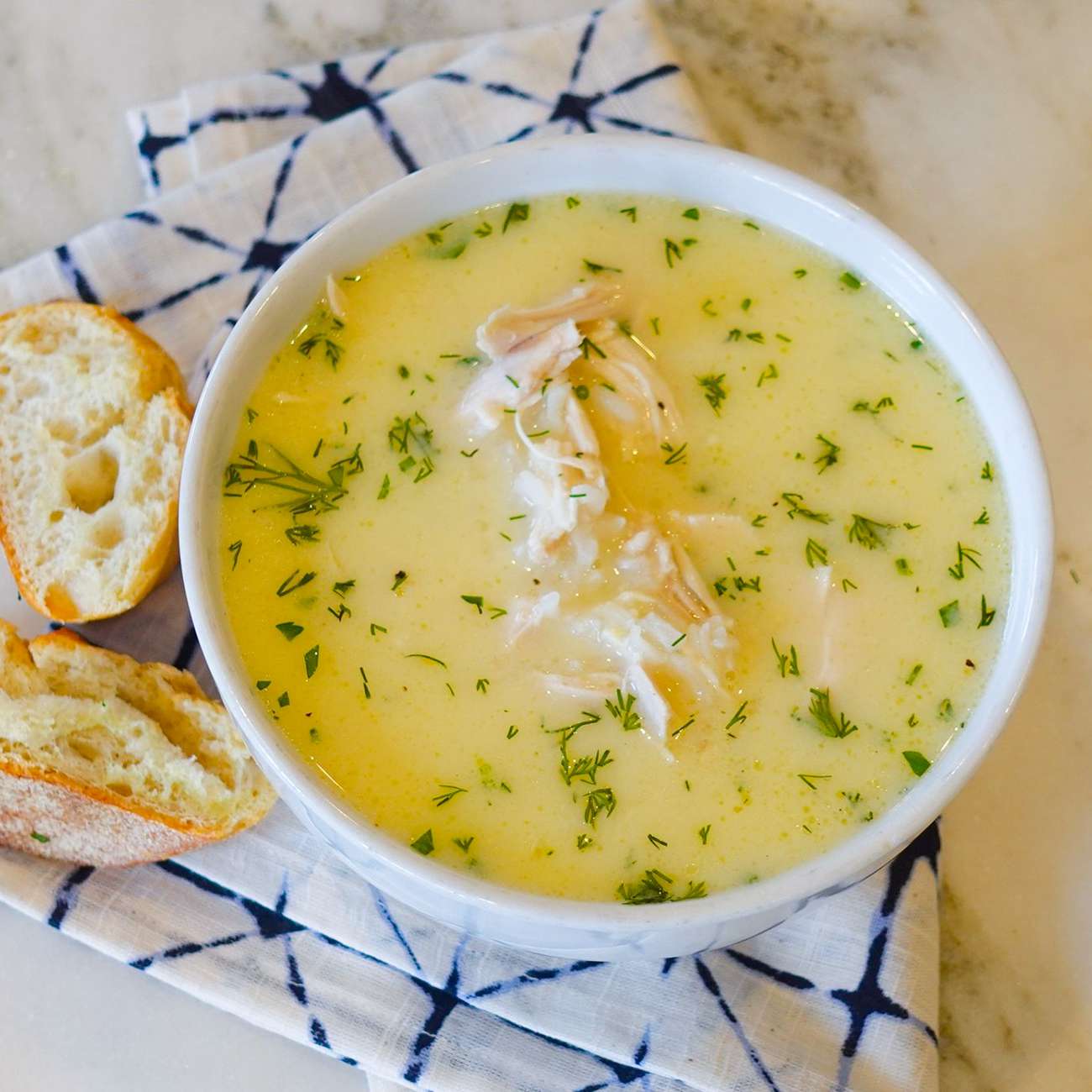Avgolemono Greek Lemon Chicken Soup is a delicious recipe that combines amazing flavors and textures.
Authentic Avgolemono soup represents the essence of Greek comfort food, featuring a silky, bright broth enriched with eggs and lemon, tender chicken, and rice. This ancient preparation method creates a luxurious texture without cream, allowing the clean, vibrant flavors to shine. The magic lies in the emulsion technique that transforms simple ingredients into something extraordinary – each spoonful delivers comfort and vitality in perfect balance.
What distinguishes true Avgolemono is its clarity of flavor and texture. Unlike thicker, cream-based soups, this version feels light yet substantial, with the egg-lemon emulsion providing body without heaviness. The rice adds gentle substance while absorbing the bright broth, and the chicken contributes savory depth. The result is a soup that simultaneously comforts and invigorates, making it perfect for both convalescence and celebration.
Historical Significance and Cultural Context
Avgolemono (from Greek “avgo” meaning egg and “lemono” meaning lemon) has been a staple of Greek and Sephardic Jewish cuisine for centuries. The technique likely originated in ancient times as a way to enrich and thicken sauces and soups without dairy, which was often scarce in Mediterranean climates. This method traveled with Greek and Jewish communities throughout the diaspora, evolving slightly in each region while maintaining its essential character.

In Greece, avgolemono is both everyday comfort food and ceremonial dish, often served at Easter and other celebrations. The soup represents culinary ingenuity – transforming humble ingredients into something luxurious through technique. Our version stays true to traditional methods while offering clear instructions for modern kitchens, ensuring this ancient preparation continues to delight new generations.
Ingredient Selection Guide
Broth: Use high-quality chicken broth for best results. Homemade broth provides superior flavor depth. For clear broth, simmer gently and skim impurities. If using store-bought, choose low-sodium to control seasoning.
Lemons: Freshly squeezed lemon juice is essential – bottled juice lacks brightness. Meyer lemons offer sweeter, less acidic alternative. Always zest before juicing for efficiency. About 3-4 lemons yield 1/2 cup juice.

Rice: Traditional Greek recipes use medium-grain white rice. Arborio rice creates creamier texture due to higher starch content. For authentic texture, avoid converted or instant rice. Rinse rice to remove excess starch.
Eggs: Use fresh, high-quality eggs for best emulsion. Room temperature eggs incorporate more easily. The eggs act as both thickener and enrichment, providing protein and velvety texture.
The Science of Egg-Lemon Emulsion
The avgolemono technique is a lesson in emulsion science. Egg proteins act as emulsifiers, surrounding fat molecules and keeping them suspended in the liquid. The lemon juice provides acidity that helps stabilize the emulsion while adding flavor.

Tempering is crucial – gradually raising the temperature of the eggs prevents protein denaturation (scrambling). The starch from the rice provides additional stability to the emulsion. Understanding this science helps achieve perfect consistency and troubleshoot potential issues.
Step-by-Step Technique Mastery
Broth Preparation: Simmer broth with aromatics to build flavor foundation. Straining creates clear, refined broth. Skim any fat or impurities for pristine result. The broth should be well-seasoned before proceeding.
Rice Cooking: Cook rice directly in broth to absorb flavor. Stir occasionally to prevent sticking. Cook until tender but not mushy. The rice will continue to soften in the hot soup.
Egg-Lemon Mixture: Whisk eggs and lemon juice until light and frothy. This incorporates air that helps stabilize the emulsion. Add hot broth very gradually while whisking constantly. The mixture should thicken slightly but remain smooth.
Final Combination: Remove soup from heat before adding egg mixture. Stir constantly in one direction to prevent curdling. The residual heat will cook the eggs without scrambling. Never return to boil after adding eggs.
Traditional Variations and Customizations
While this is the classic preparation, regional variations exist: Some add avgolemono to vegetable soups; Others use it as sauce for stuffed grape leaves or meatballs; Some versions include beaten egg whites for lighter texture; Island variations might add fish instead of chicken.
Modern adaptations include: Adding orzo instead of rice; Incorporating spinach or kale; Using quinoa for whole grain option; Adding saffron for luxury version; For different protein, try shrimp added at the end.
Professional Chef Secrets
For exceptional clarity, clarify broth with egg whites before using. For richer flavor, use homemade chicken stock instead of broth. For perfect consistency, use thermometer – soup should be below 180°F when adding egg mixture.
For enhanced lemon flavor, add strips of lemon zest to broth while simmering. For extra silkiness, blend 1/4 of the soup before adding egg mixture. For traditional garnish, add avgolemono sauce to individual bowls rather than whole pot.
Serving and Presentation

Serve in warm bowls to maintain temperature. Garnish with fresh dill and lemon slices. Offer crusty bread for dipping. In Greece, it’s often served with feta and olives on the side.
Pair with Assyrtiko white wine from Santorini for authentic experience. For non-alcoholic option, serve with mint-infused water. Present with traditional Greek pottery for cultural authenticity.
Storage and Reheating Guidelines
This soup is best served immediately but can be refrigerated for 2 days. Reheat gently over low heat, stirring frequently. Do not boil or the eggs may curdle. The rice will continue absorbing liquid, so you may need to add more broth when reheating.
For meal prep, prepare broth and rice ahead but add egg-lemon mixture when ready to serve. The components can be stored separately for quick assembly. The soup doesn’t freeze well due to the egg emulsion.
Final Thoughts
As you taste this ancient preparation that has comforted generations, appreciate how simple ingredients transformed through technique can create something greater than the sum of its parts. May this soup bring both nourishment and connection to culinary traditions that have stood the test of time.

Avgolemono Greek Lemon Chicken Soup
Ingredients
Method
- In large pot, combine broth, onion, carrots, celery and bay leaf
- Bring to boil, then reduce heat and simmer 20 minutes
- Strain broth, discarding vegetables
- Return strained broth to pot
- Add rice and simmer for 15 minutes until tender
- Whisk eggs and lemon juice until frothy
- Ladle 2 cups hot broth into egg mixture slowly while whisking
- Temper to prevent curdling
- Remove soup from heat
- Slowly whisk egg mixture back into pot
- Add chicken and heat gently without boiling
- Stir in dill and season with white pepper
- Ladle into bowls
- Garnish with additional dill and lemon slices
- Serve immediately



